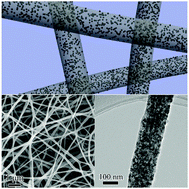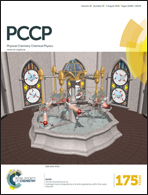Direct planting of ultrafine MoO2+δ nanoparticles in carbon nanofibers by electrospinning: self-supported mats as binder-free and long-life anodes for lithium-ion batteries†
Abstract
Three-dimensional (3D) interconnected carbon nanofibrous mats containing well-dispersed MoO2+δ nanocrystals are fabricated through a facile electrospinning route followed by thermal treatment in N2. The resulting nanostructured monolithic hybrid mat made of C/MoO2+δ nanofibers exhibits superior Li-storage performances, when evaluated as a free-standing anode material. At a current density of 200 mA g−1, a reversible capacity as high as 876.9 mA h g−1 is achieved after 250 cycles. A capacity of 447.9 mA h g−1 could still be maintained after 1000 cycles even at a high current density of 2000 mA g−1, indicating high rate capability and cyclability. The attractive electrochemical performances of the as-obtained 3D C/MoO2+δ networks may benefit from the synergistic effects of the unique nanoarchitectures and the integrity of the electrodes. Monodispersed MoO2+δ nanocrystals encapsulated in carbon nanofibers not only provide interfacial storage but also improve the transport kinetics of electrons and lithium ions.


 Please wait while we load your content...
Please wait while we load your content...